The photometry of MUSE field UDF07
Muse field UDF07 is a 1x1 arc-minute field centered at Right Ascension 03:32:33, and declination -27:47:18, within the Hubble UDF. The HST image of this region, seen through the F606W filter and resampled onto the pixel grid of the MUSE images of UDF07, is shown below.
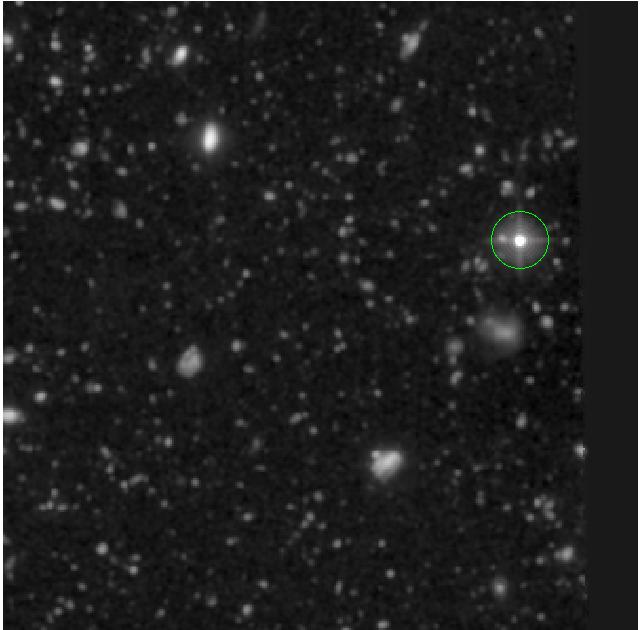
This field contains a bright star which should be excluded from the fit to obtain a good fit for all other sources between the MUSE and HST images, as described in the pitfalls section. The output of the following command, including the plot shown below it, show the poor fit that is obtained if the star is not excluded from the fit:
% fit_photometry hst_F606W_for_UDF07.fits wfc_F606W_UDF07.fits --fix_beta=2.8 --hardcopy jpeg
# MUSE observation ID Method Flux FWHM beta Flux x-offset y-offset
# scale (") offset (") (")
#--------------------------------- ------ ------ ------ ------ -------- -------- --------
wfc_F606W_UDF07 image 1.1583 0.6244 2.8000 0.04888 0.00633 0.00765
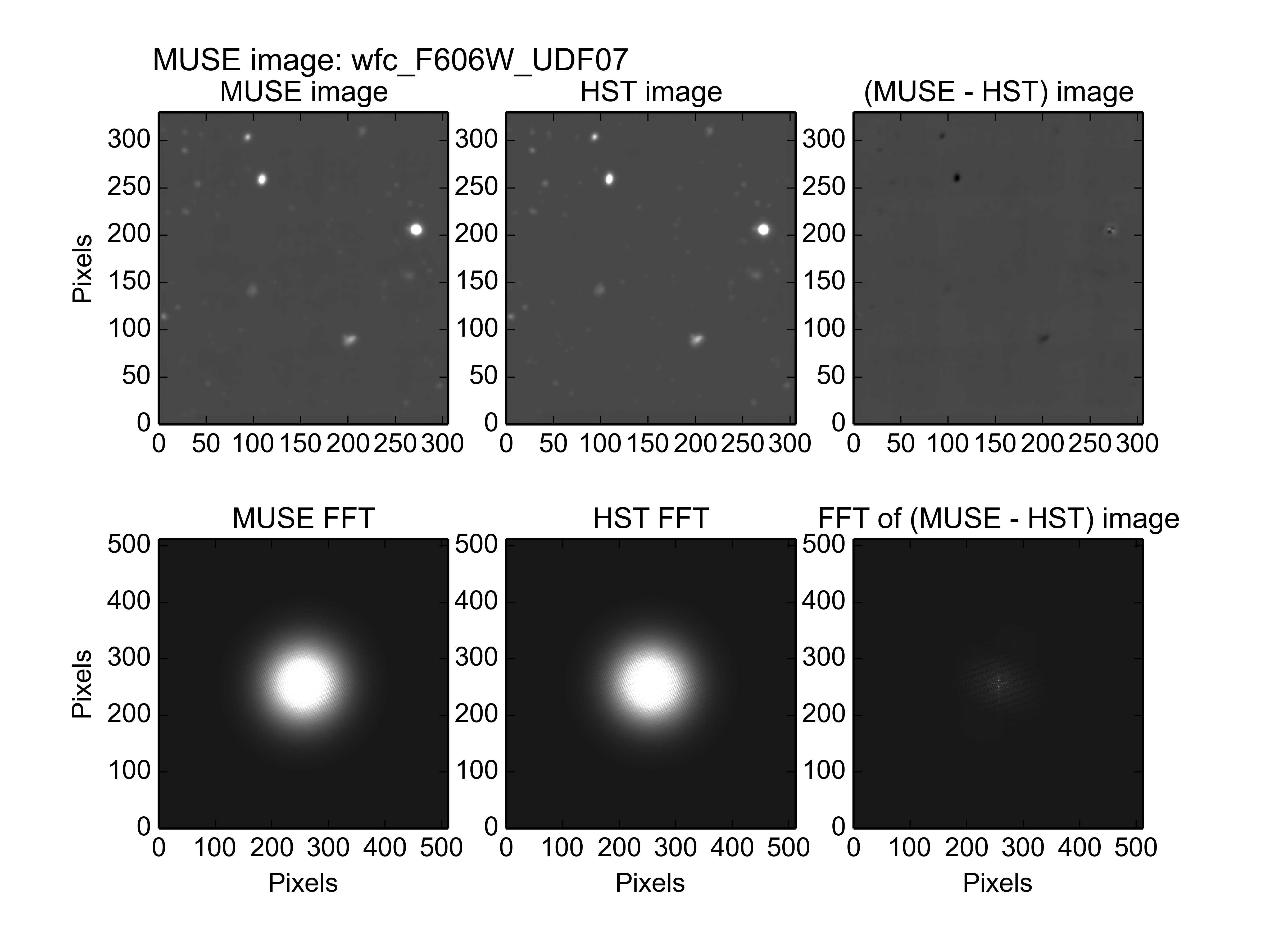
With the bright star included in the fit, the residual image indicates a very poor fit, due to the HST stellar flux-loss problem, described in the pitfalls section. Unlike other MUSE UDF fields with stars in them, there is no evidence that the proper motion of the star has misaligned the image for the other sources, so this implies that it has a low proper motion. If the star is excluded, then the fit improves, as follows:
% fit_photometry hst_F606W_for_UDF07.fits wfc_F606W_UDF07.fits --regions=exclude_udf_stars.reg --fix_beta=2.8 --hardcopy jpeg
# MUSE observation ID Method Flux FWHM beta Flux x-offset y-offset
# scale (") offset (") (")
#--------------------------------- ------ ------ ------ ------ -------- -------- --------
wfc_F606W_UDF07 image 0.9824 0.6548 2.8000 0.05633 0.00953 -0.05440
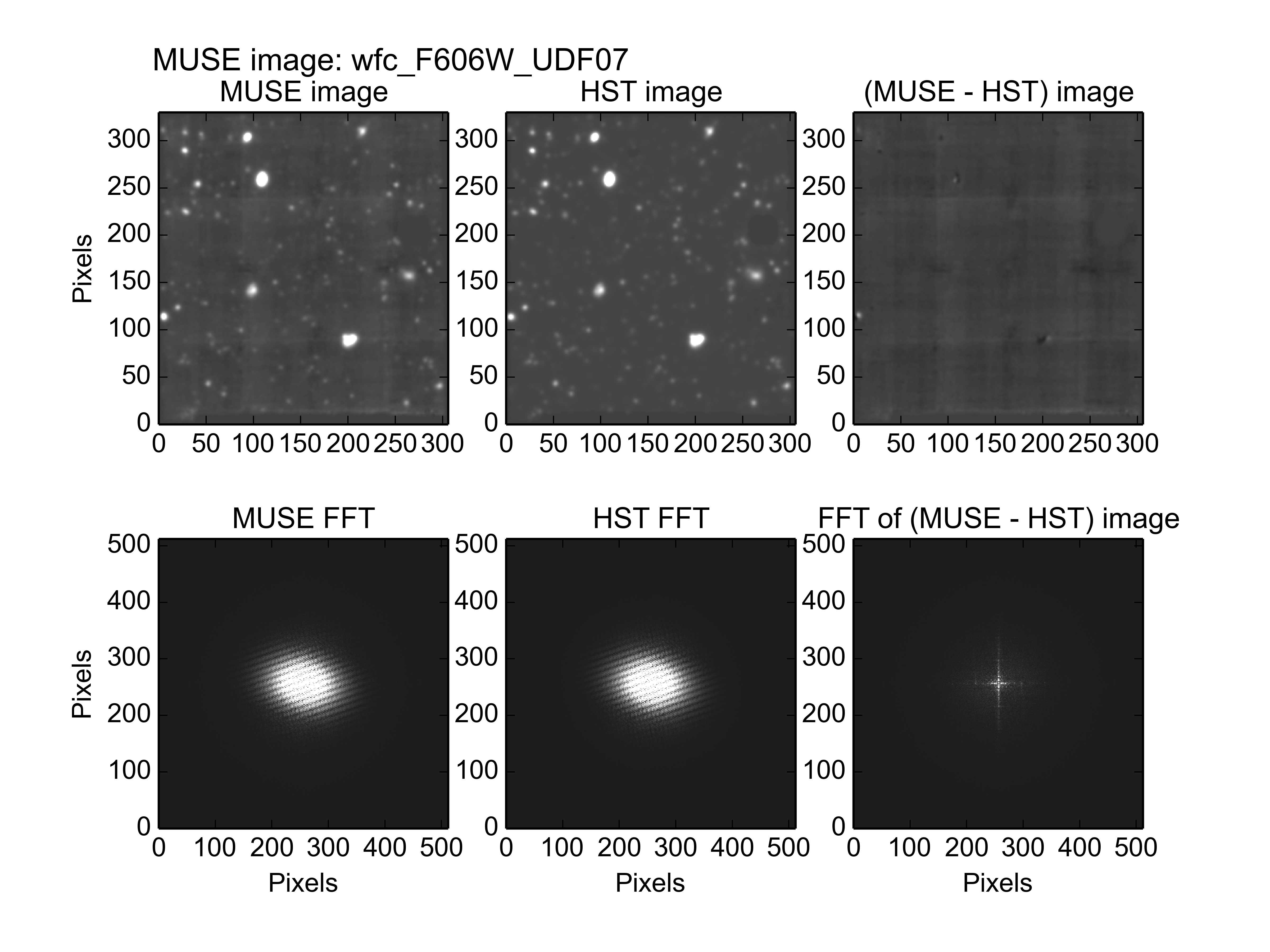
The residual image is dominated by the instrumental background of the original MUSE image, so it appears to be a good fit. A slightly better looking residual image can be obtained by modifying the region file to exclude overlapping margins of the UDF04 and UDF08 fields, but the fitted numbers don’t change significantly.
Another estimate of the PSF of the image can be obtained by performing an image fit to a small area centered on the star. This has the following results:
% fit_photometry hst_F606W_for_UDF07.fits wfc_F606W_UDF07.fits --regions=udf07_star.reg --fix_beta=2.8 --hardcopy jpeg
# MUSE observation ID Method Flux FWHM beta Flux x-offset y-offset
# scale (") offset (") (")
#--------------------------------- ------ ------ ------ ------ -------- -------- --------
wfc_F606W_UDF07 image 1.1708 0.6263 2.8000 0.11258 0.00614 0.00829
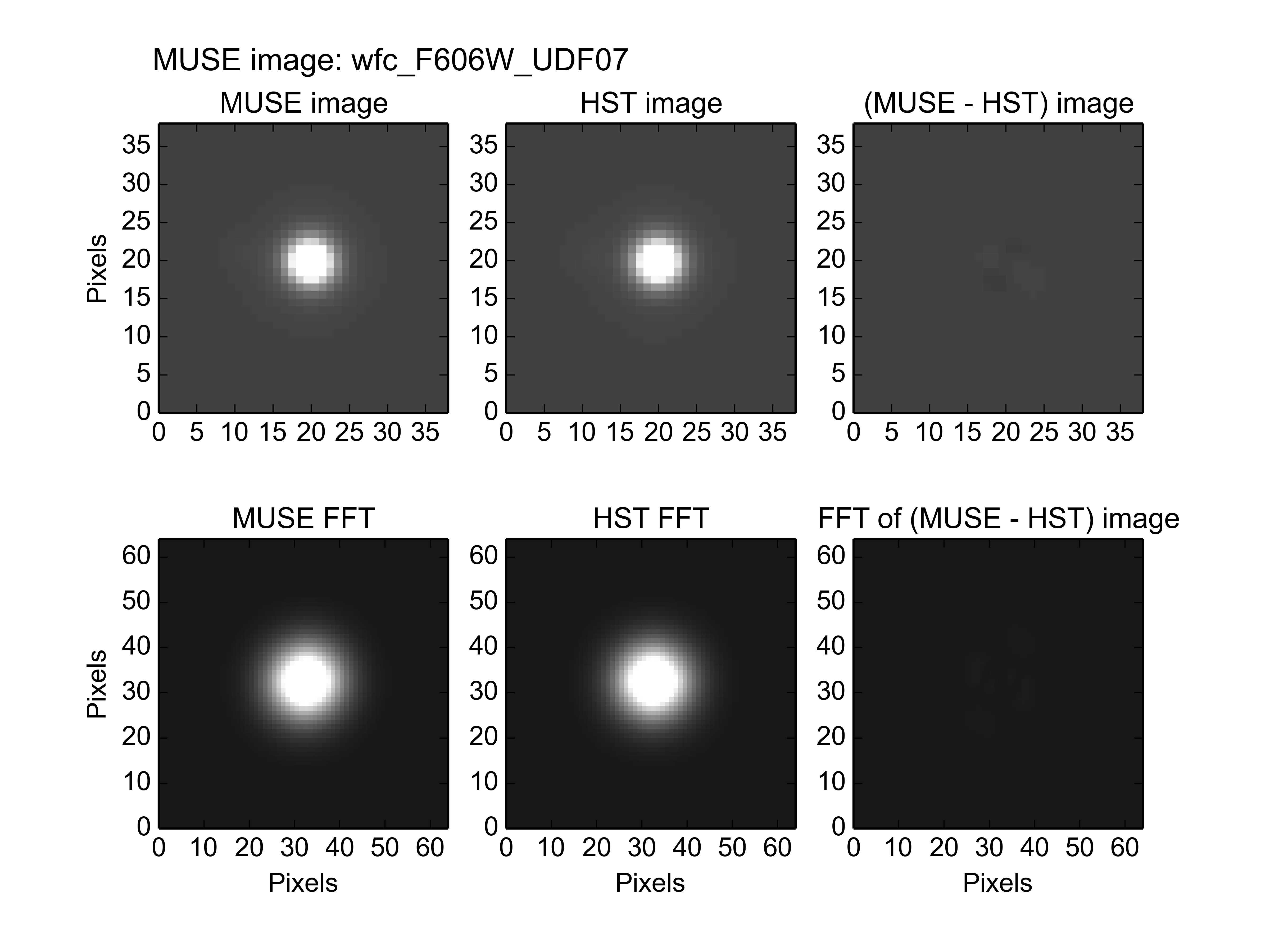
The amount that the star moved relative to the other sources in the
image, can be estimated by taking the vector difference between the
fitted pointing errors to the image without the star, and the image of
the star. This yields a value of 0.06±0.08 arcsec, where the
uncertainty was estimated using the errors on the fitted position
offsets, which can be obtained using the --verbose option of the
fit_photometry script. In other words its
accumulated proper motion over the 11 years between the HST and UDF
observations of this field, was too small to measure within the
resolution of MUSE. In [1] by Pirkal et al (2005), the proper
motion of this star (UDF 5921) was reported as being 3.27±1.26
mas/year. Over the 11 years between the observations, this should have
moved the star by 0.04 arcseconds, which is comfortably within our
estimate.
FWHM versus wavelength
The examples of the previous section operated on images that had the spectral response curve of the HST F607W filter. If similar fits are also performed to MUSE UDF07 images that have the spectral response curves of other HST filters, then the variation of the fitted FWHM of the PSF can be obtained versus wavelength. In the following diagram, the best-fit values of the PSF FWHM are plotted versus the pivot wavelength of these filters. The results of 2 different sets of fits are plotted. The first fit was to everything in the UDF07 images except for the bright star, which was excluded with a region file. The second fit was limited to a region of 3 arcseconds radius, centered on the star.
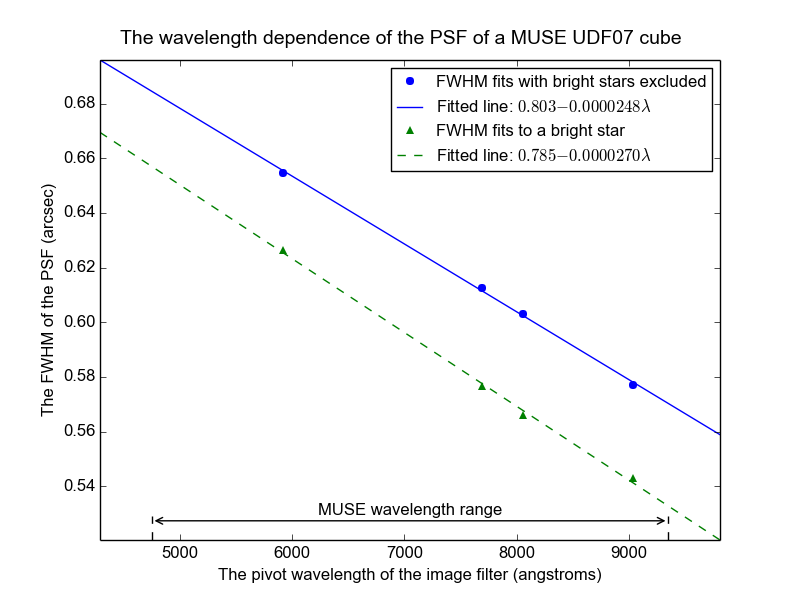
There is an obvious offset of about 0.03 arcseconds between the FWHM values fitted to the image with the star excluded, and the FWHM values fitted to the stellar image. The origin of this offset is not yet known, and both sets of fits lie as closely along a straight line as each other, so there is no hint of one being better behaved than the other. One possibility is that because the star is much brighter than anything else in the image, the stacked exposures that contributed to this image are probably better aligned for the star than for anything else in the image. That would make its FWHM narrower than other sources. This would be especially true for sources further from the star if there was any residual field rotation between successive exposures. Hopefully the discrepancy will disappear as the algorithms used to align exposures improve.
Footnotes